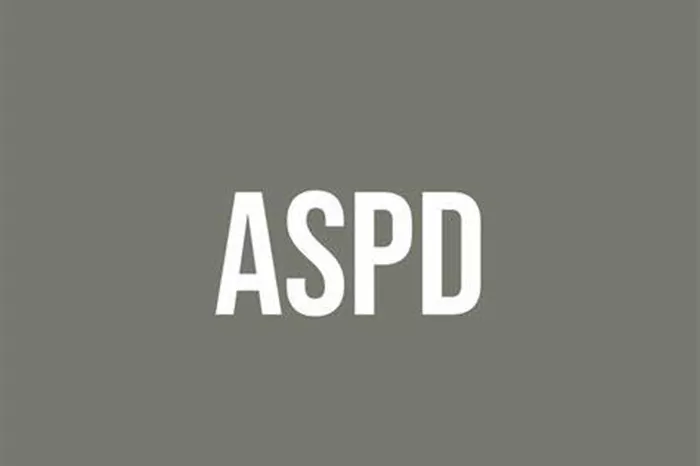Healthcare is a fundamental part of any society, and access to medical services is critical for the well-being of individuals and communities. In Ontario, Canada, the healthcare system is designed to provide citizens with access to high-quality medical services, and many of these services are available for free. This article will provide a detailed overview of Ontario’s free treatment programs, explaining how residents can access healthcare services without incurring significant costs, the role of the Ontario Health Insurance Plan (OHIP), and the range of medical services covered under this system.
Understanding the Ontario Healthcare System
Ontario’s healthcare system is publicly funded and administered under the Ontario Health Insurance Plan (OHIP), which ensures that most basic medical services are covered at no cost to residents. OHIP is funded through taxes, with the provincial government allocating resources to cover the costs of healthcare services for Ontarians. The system is designed to ensure that everyone, regardless of income or background, has access to necessary healthcare treatments, including hospital visits, doctor appointments, and certain specialist services.
Ontario’s healthcare system is founded on the principles of equity and accessibility. This means that all residents of Ontario, including Canadian citizens, permanent residents, and those with valid work or study permits, are entitled to receive free healthcare services provided by the provincial government. However, there are certain criteria and processes that individuals must follow to receive these benefits.
Eligibility for Free Healthcare Treatment in Ontario
Not all individuals are automatically eligible for free healthcare treatment in Ontario. To access free healthcare through OHIP, residents must meet specific eligibility requirements. The basic requirements for OHIP coverage include:
Residency Requirement: To qualify for OHIP, you must be a resident of Ontario and have lived in the province for at least 153 days in a 12-month period. You must also be physically present in Ontario for at least 153 days in each 12-month period. Visitors and tourists do not qualify for OHIP coverage.
Canadian Citizenship or Legal Status: To be eligible for OHIP, you must be a Canadian citizen, permanent resident, or a holder of a valid work or study permit. Individuals who do not meet these criteria are not eligible for free healthcare coverage through OHIP.
Application Process: Once you meet the eligibility requirements, you must apply for an OHIP card. This card is proof of your entitlement to free healthcare treatment under the Ontario system. New residents of Ontario must apply for OHIP within three months of establishing residency in the province.
Once you are eligible and registered for OHIP, you can begin accessing a wide range of healthcare services at no cost.
What is Covered by OHIP?
OHIP covers a variety of medical services, including essential treatments and services that are considered necessary for the diagnosis, treatment, and management of health conditions. While there are some exceptions and certain services that may require out-of-pocket expenses, the following are generally covered under the Ontario Health Insurance Plan:
1. Doctor Visits
One of the most fundamental benefits of OHIP is coverage for visits to family doctors and specialists. Whether you need a routine check-up, require treatment for an illness, or need referrals to specialists, OHIP covers the costs of these services. In addition to general practitioner (GP) visits, OHIP also covers visits to specialists such as cardiologists, dermatologists, or endocrinologists, provided the specialist referral is approved by your family doctor.
2. Hospital Services
OHIP covers the cost of inpatient and outpatient hospital services. This includes emergency room visits, surgeries, diagnostic tests, and any necessary follow-up care within a hospital setting. If you are admitted to a hospital for a procedure or treatment, OHIP will cover the costs of your stay, including room and board, surgeries, medications administered during your stay, and diagnostic tests such as X-rays, MRIs, and blood tests.
3. Medical Tests and Diagnostic Services
OHIP covers a range of diagnostic services, including blood tests, X-rays, MRIs, and ultrasounds, that are ordered by your healthcare provider. These tests are crucial for diagnosing medical conditions and determining the most effective treatment options. Some specialized tests, such as those used for fertility treatments or elective genetic testing, may not be covered under OHIP.
4. Mental Health Services
Mental health is an essential part of overall health, and Ontario’s healthcare system acknowledges the importance of mental health services. OHIP provides coverage for counseling and therapy services provided by psychiatrists. While services from psychologists, social workers, or counselors may not be fully covered under OHIP, some individuals may have extended coverage through their private insurance plans, employer benefits, or community health programs.
5. Maternity and Newborn Care
Expecting mothers are entitled to free prenatal care, labor and delivery services, and postnatal care through OHIP. This includes visits to obstetricians, midwives, and other healthcare professionals throughout pregnancy, as well as delivery costs in a hospital. Newborns are automatically covered under OHIP once they are born, ensuring that they have access to necessary health services, including vaccinations and pediatric care.
6. Vaccinations and Preventive Care
OHIP covers a variety of vaccinations and preventive health services. This includes vaccines for children, such as the MMR (measles, mumps, rubella) vaccine, as well as flu shots and other immunizations. Preventive care, such as screenings for cancer (e.g., mammograms and colonoscopies), is also covered under OHIP, provided you meet the eligibility criteria or are referred by your doctor.
7. Emergency Medical Services
If you require emergency medical services, OHIP covers the cost of care you receive at an emergency room. This includes immediate treatment for serious injuries, heart attacks, strokes, and other critical health events. Paramedic services, including ambulance transportation, are also covered under OHIP if deemed medically necessary.
8. Surgical Procedures
Many common surgical procedures are covered under OHIP, including elective surgeries that are deemed medically necessary. This includes surgeries like gallbladder removal, hip replacements, and heart surgeries. Cosmetic surgeries or elective procedures that are not medically necessary may not be covered.
9. Prescription Drugs (Limited Coverage)
While OHIP covers most medical treatments and services, prescription medications are not generally covered unless you are receiving care in a hospital or certain drug treatments are deemed medically necessary. However, Ontario has a program called the Ontario Drug Benefit Program (ODB), which provides coverage for prescription medications for seniors, low-income individuals, and those with specific health conditions. Additionally, private insurance plans may cover prescription drugs for those who are not eligible for ODB.
Additional Healthcare Services Not Covered by OHIP
While OHIP provides comprehensive coverage for most healthcare services, there are some services that are not covered by the plan. These include:
Cosmetic Procedures: Cosmetic surgeries, including facelifts, liposuction, and other elective procedures, are not covered by OHIP unless they are medically necessary (e.g., reconstructive surgery after a serious accident).
Dental Services: Routine dental care, such as cleanings, fillings, and check-ups, is not covered under OHIP. However, some dental procedures that are deemed medically necessary (such as surgery to treat jaw disorders) may be covered.
Vision Care: OHIP generally does not cover routine eye exams or glasses. However, some eye care services, such as medical eye exams for conditions like glaucoma or cataracts, may be covered.
Chiropractic and Physiotherapy: These services are generally not covered under OHIP except for specific situations, such as hospital-based treatments or services provided in certain healthcare settings.
Prescription Drugs (Outside of the ODB): For individuals who do not qualify for the Ontario Drug Benefit Program, the cost of prescription drugs is generally not covered by OHIP.
How to Access Free Treatment in Ontario
To access free treatment through OHIP, the first step is ensuring that you are eligible and have registered for OHIP. Once you have your OHIP card, you can visit a healthcare provider for most medical services covered under the plan. You will typically need to present your OHIP card when seeking treatment to confirm your eligibility.
For those requiring services that are not covered by OHIP, such as prescription drugs or dental care, it is important to explore other forms of coverage, such as private insurance, extended healthcare benefits through employers, or government programs like the Ontario Drug Benefit Program.
Conclusion
Ontario’s healthcare system is designed to provide residents with access to a wide range of essential medical services, most of which are available for free under the Ontario Health Insurance Plan (OHIP). By ensuring that all residents have access to necessary treatments, from doctor visits to hospital services and preventive care, Ontario’s healthcare system helps to maintain the overall health and well-being of its population. While there are certain services that may require additional coverage, Ontario’s public healthcare model ensures that no one is left behind when it comes to receiving the medical care they need.
Related Topics





























